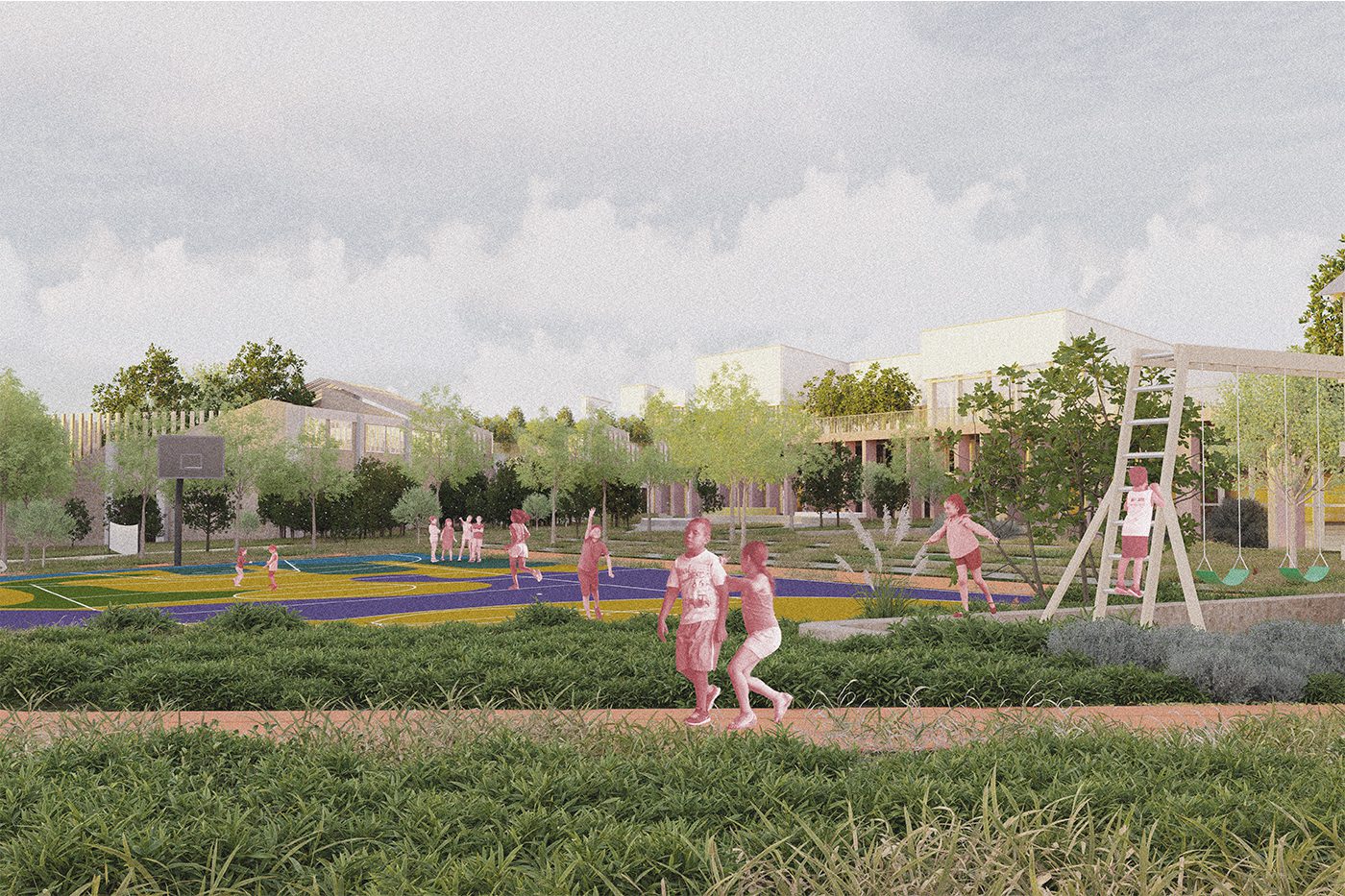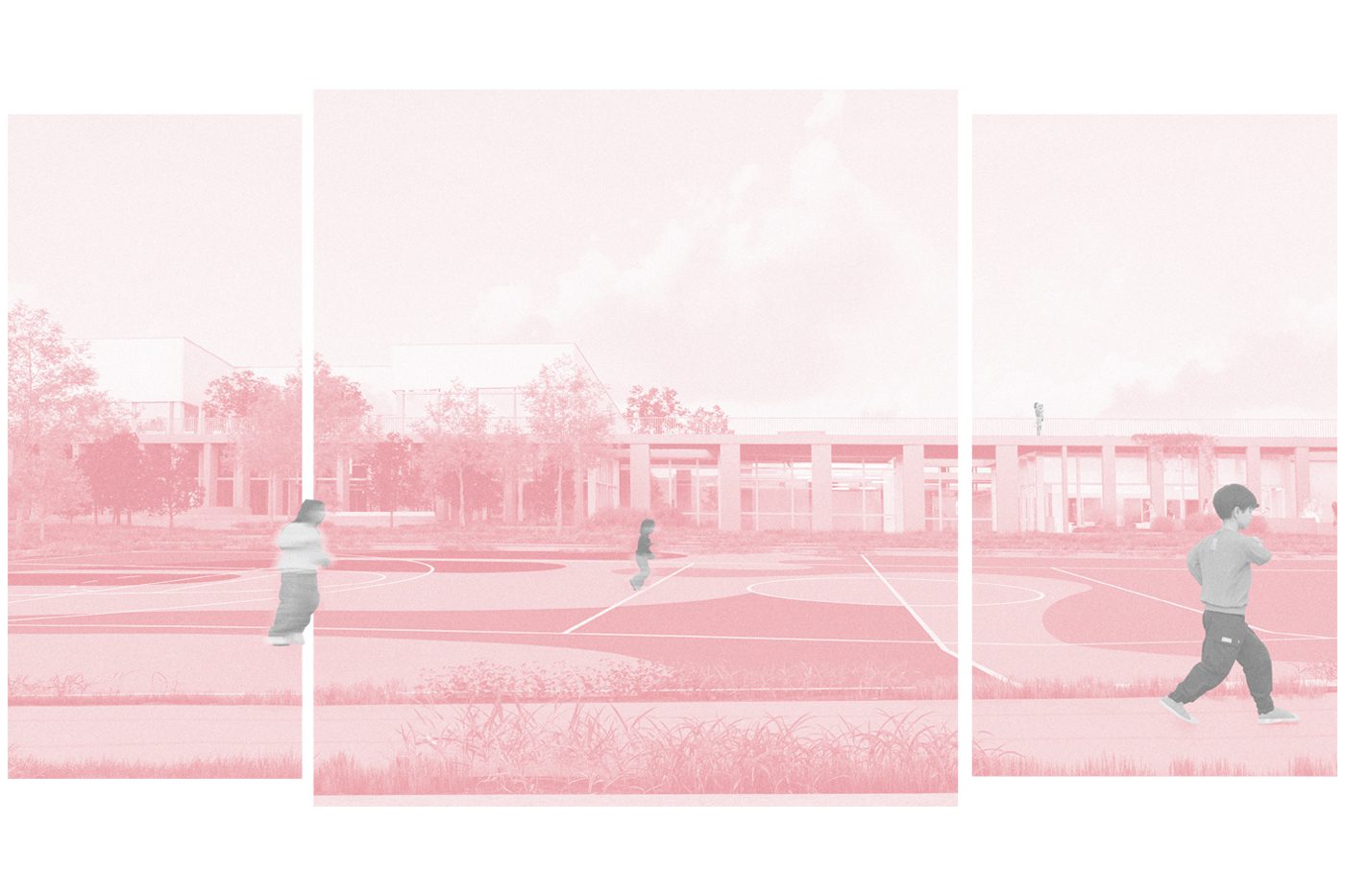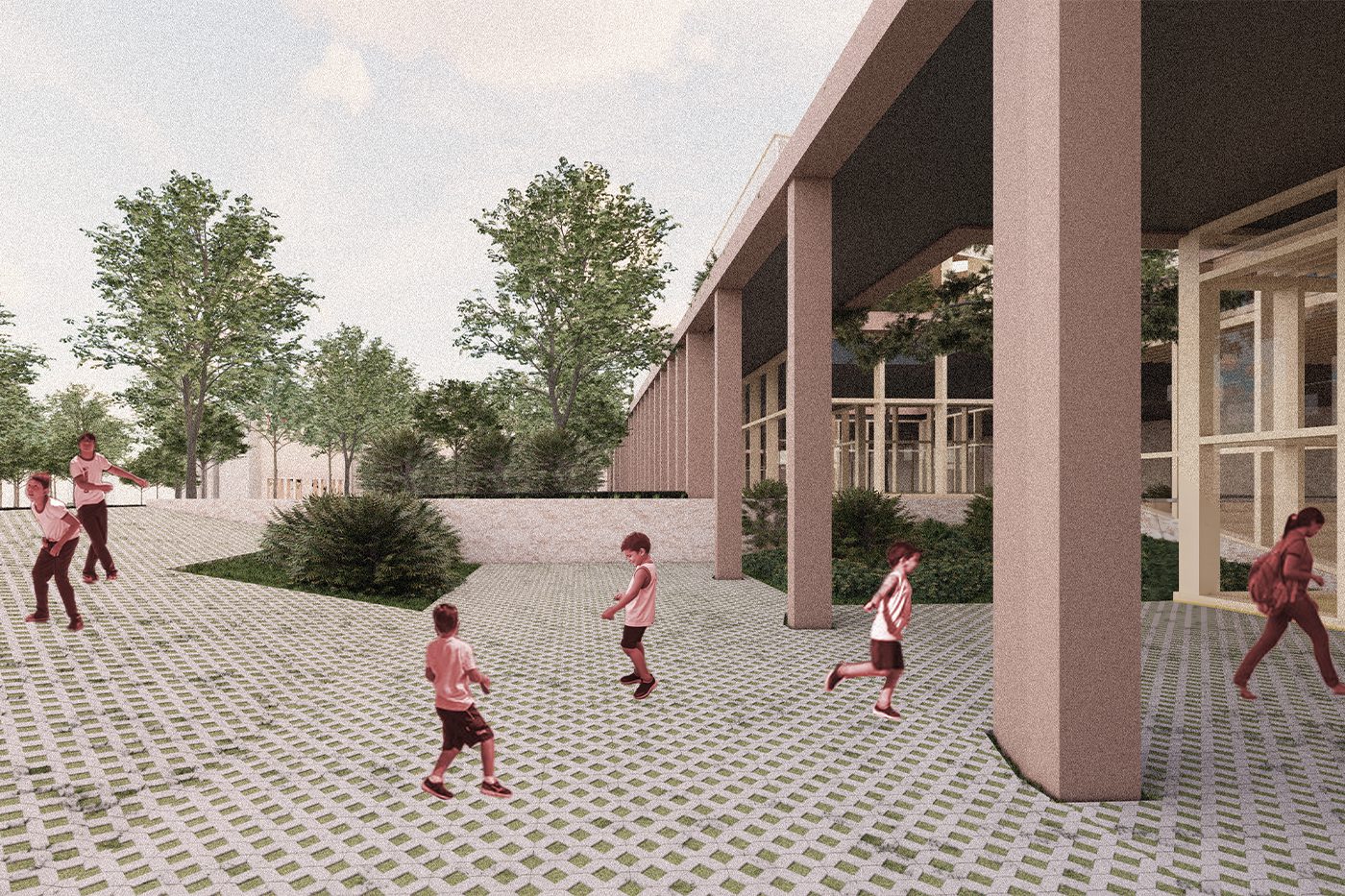Project implementation: Brazil
Project development: USA
Student: Rodrigo Gallardo
The Fluid Territory explores the city beyond maps, the one that exists in the memory, experience, and untold stories of its inhabitants. In Vargem Grande, on the outskirts of São Paulo, this difference becomes evident: maps show it as an urban fragment amidst the forest, but daily life reveals another reality, marked by precarious housing, a lack of support in schools, and a territory lived between fear and oblivion of nature.
The project emerged from dialogue with residents and the presence of the Guarani, recognizing that the territory is shared between different worlds: the Jurua, who arrived in search of housing, and the indigenous people, whose worldview offers other ways of living. Rather than imposing closed responses, the interventions propose open conditions capable of accommodating the diversity of voices and needs.
At school, narrow corridors and hot metal rooms give way to meeting spaces where knowledge circulates beyond the walls. In homes, what was once instability is transformed into structures that strengthen the permanence and dignity of their residents. The forest, once feared and distant, is reconnected by trails and paths that invite use, coexistence, and collective memory.
The work doesn't seek definitive solutions, but rather to open up possibilities. It's about thinking of architecture as a listening tool, capable of bringing to light what already exists latently: the strength of community, shared memory, and the coexistence of different ways of life. If every city is a palimpsest of overlapping histories, here the architectural gesture is not to erase, but to reveal.
More than constructing buildings, it is about creating conditions so that new paths can be opened, paths in which the school, the home and the forest cease to be isolated fragments and become part of the same collective fabric.




